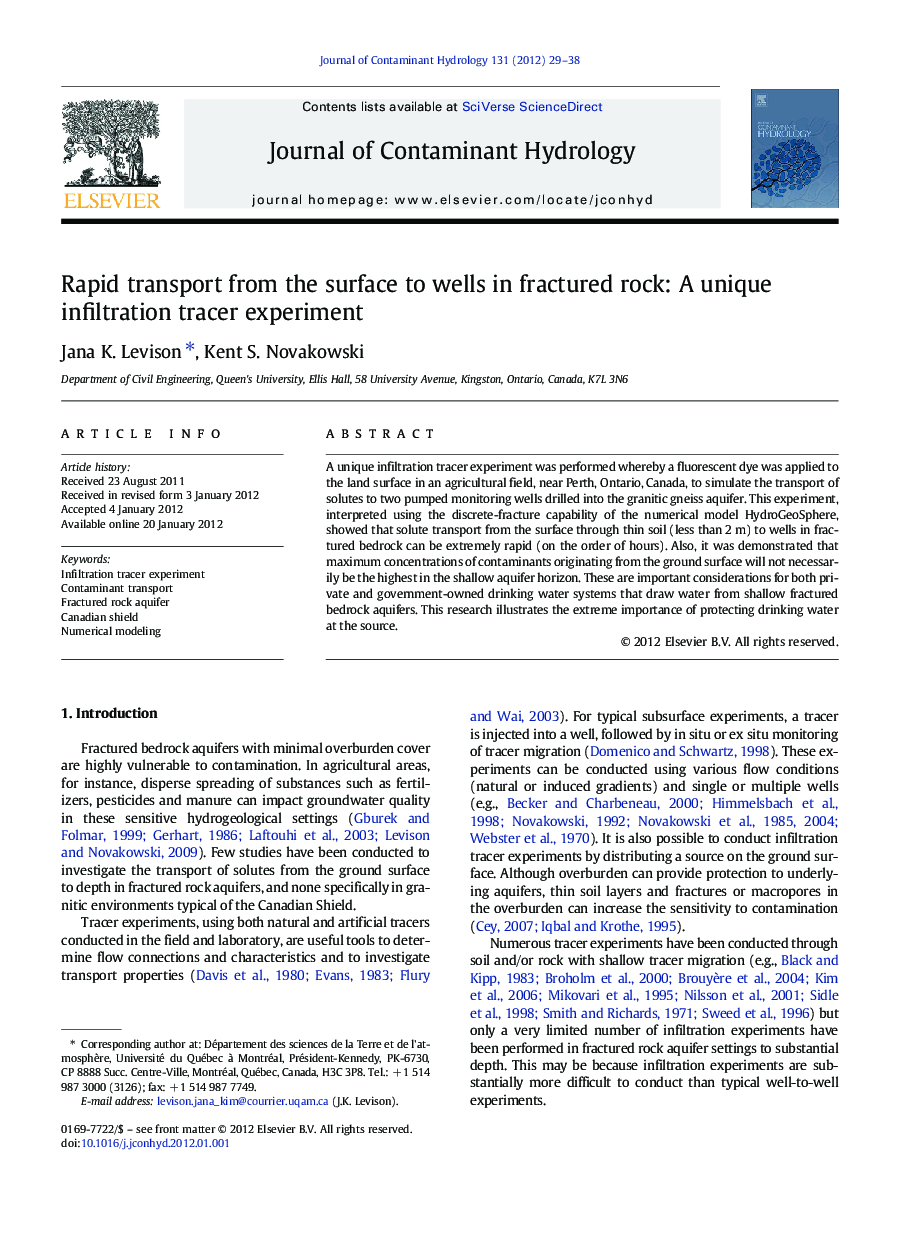| Article ID | Journal | Published Year | Pages | File Type |
|---|---|---|---|---|
| 4546844 | Journal of Contaminant Hydrology | 2012 | 10 Pages |
A unique infiltration tracer experiment was performed whereby a fluorescent dye was applied to the land surface in an agricultural field, near Perth, Ontario, Canada, to simulate the transport of solutes to two pumped monitoring wells drilled into the granitic gneiss aquifer. This experiment, interpreted using the discrete-fracture capability of the numerical model HydroGeoSphere, showed that solute transport from the surface through thin soil (less than 2 m) to wells in fractured bedrock can be extremely rapid (on the order of hours). Also, it was demonstrated that maximum concentrations of contaminants originating from the ground surface will not necessarily be the highest in the shallow aquifer horizon. These are important considerations for both private and government-owned drinking water systems that draw water from shallow fractured bedrock aquifers. This research illustrates the extreme importance of protecting drinking water at the source.
► An infiltration tracer experiment was used investigate transport from the surface to wells. ► The two wells were drilled into bedrock in Ontario, Canada. ► The surface-applied tracer reached the pumped wells quickly (on the order of hours). ► Maximum concentrations were not the highest in the shallow horizon. ► Infiltration tracer experiments provide valuable contaminant transport information.
